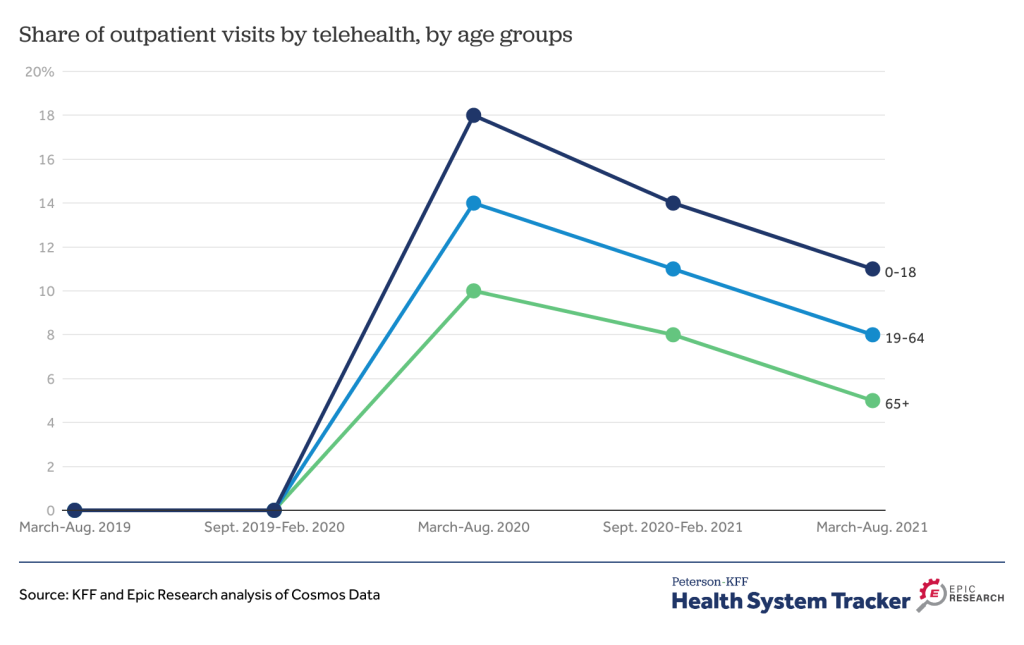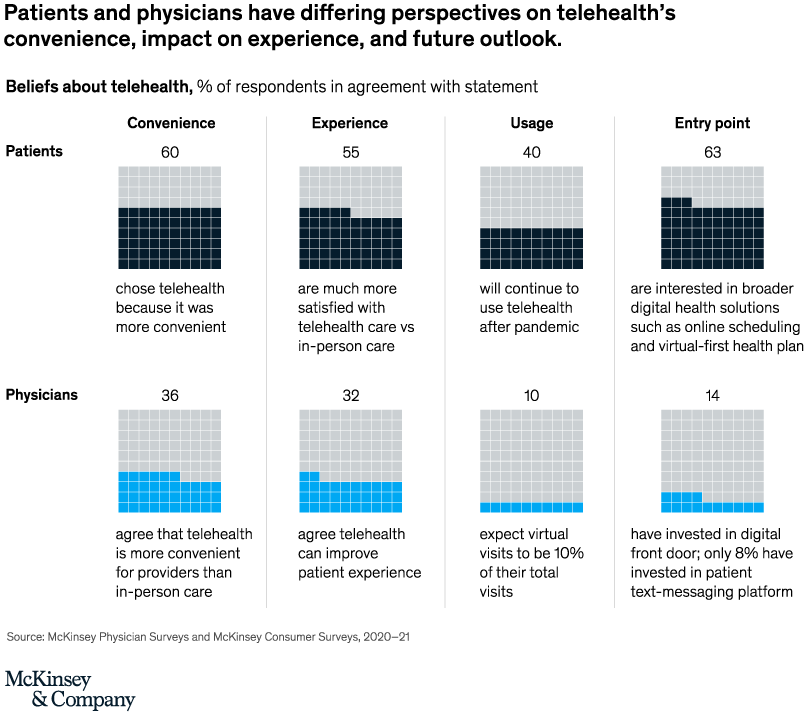Telehealth surged during the COVID-19 pandemic, bringing the experience of virtual doctor’s visits to scores of people who’d never had – or even wanted – to Zoom with their medical provider. Once protocols were implemented for social distancing, telemedicine enabled health care providers to deliver care online through the internet or by phone. By May 2021, a Mckinsey survey found that 88 percent of consumers had used telehealth services during the pandemic. It remains convenient for patients to get medical care while remaining in their homes, but what’s happening now with telehealth?
Who is using telehealth services the most?
You’d think telehealth services would continue to appeal to seniors with limited mobility and multiple health conditions. Yet usage of these services declined from 10% (2020) to 5% (2021) among older adults. Business journalists can delve more into the usage reduction, often attributed to discomfort with technology, limited internet access, privacy concerns or a preference for seeing doctors the old-fashioned way: in person.
What prevents telehealth services from growing?
While physicians appreciate electronic registration and recordkeeping, many are not as gung-ho about telehealth as their patients are. Some don’t like logging into different systems and prefer one-on-one contact.
Then there’s the financial aspect. During COVID, Medicare, states and employers acted. Medicare suspended restrictions on telehealth, states allowed payment and employers reduced or eliminated cost-sharing. Health care providers were reimbursed the same amount for telehealth visits as in-person visits, temporarily during COVID. As of Aug 2022, 21 states have made payment parity permanent and 5 states have payment parity with caveats.
For your articles, look into companies that are not offering telehealth services. Reasons might involve technology limitations or finances. Amazon is shuttering its telehealth venture by year’s end, for example. Neil Lindsay, senior vice president of Amazon Health Services, emailed employees that it wasn’t “the right long-term solution” for enterprise customers.
Yet, Amazon is committed to the healthcare tech space. They acquired One Medical which provides in-person, digital, and virtual care services. And they launched Alexa Smart Properties so ambient computing could help patients ask nurses for a blanket, listen to music or connect to loved ones simply through their voices. Boston Children’s and Cedars-Sinai hospitals signed on.
Explore the benefits of telehealth
The obvious benefit is the ease of use. Patients and physicians just need a smartphone, computer or tablet. Other benefits to embracing telemedicine include:
Increased accessibility
Telehealth enables marginalized and underserved communities to get care. It also helps people with disabilities and those living in rural areas.
Telehealth visits constitute about 60-70 percent of healthcare services in tribal communities, for example, according to a report based on information from the Indian Health Service (IHS). The IHS provides healthcare services to about 2.6 million American Indians and Alaska Natives. In a recent panel discussion sponsored by Harvard Law School’s Petrie-Flom Center for Health Law Policy, Biotechnology and Bioethics, participants emphasized that as telemedicine expands, it must ensure accessibility for all.
Pivotal for mental health challenges
The highest usage of telehealth services has been related to mental health and substance use. The World Health Organization (WHO) has noted a 25 percent increase in depression and anxiety worldwide during the first year of COVID-19, yet many still don’t have access to mental health care. As governments worldwide spend only about 2 percent of their health budgets on mental health, telemedicine could fill the gap.
Telehealth is an excellent addition for colleges and universities. Gen Z students are comfortable with telehealth visits for mental health. And 70 percent of higher ed presidents consider student mental health a pressing issue. They like that students can get access to support 24/7 this way.
Cost-effective and satisfies patients
An important tool especially for mental health care, consumers like telehealth and its low-cost or no-cost aspect. College presidents cite it as a cost-effective resource.
More story ideas
Localize a story about how telehealth helped an underserved population in your town by reducing travel to appointments and time off from work. Or pursue a story on how telehealth helps small businesses with cost savings.
For instance, global health services company Cigna teamed with Oscar Health to offer small businesses in 15 Arizona counties access to zero-cost health insurance with 24/7 virtual doctor visits.
Telehealth is only growing as a stand-alone solution and as part of a hybrid model that includes in-person and virtual care. Venture capitalists invested $14.7 billion in the digital health space in the first six months of 2021 which bodes well for the next chapter of telehealth.













